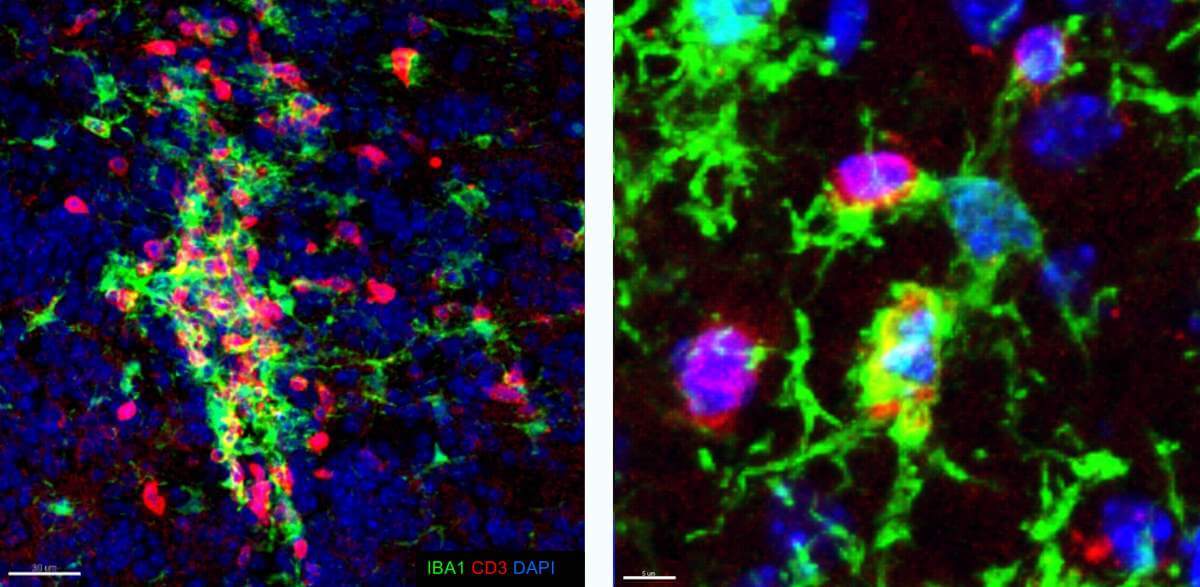The scientists of the institute have identified the cells in the brain that are responsible for the grace periods of the multiple sclerosis patients. The findings may pave the way for new treatments
MS is an insidious disease. In its early stages, this disease of the central nervous system is characterized by intermittent attacks and remissions, but eventually it overwhelms the body and is no longer inhibited.
If we know how to extend the duration of the remissions, we will be able to significantly improve the lives of many thousands of patients, and perhaps in the future cure the disease altogether. Several existing drugs, including Copaxone, which was developed on the basis of research by scientists at the Weizmann Institute of Science, already manage to delay the attacks, at least temporarily. However, very little is currently known about the natural mechanisms in the body that participate in pauses. BNew research of the Institute's scientists, significant progress was made in this direction: the researchers led by Prof. Stephen Jung From the Department of Immunology and Biological Regeneration, they identified a population of cells involved in remissions - brain cells that belong to the immune system and are called microglia.
Multiple sclerosis is an autoimmune disease: it develops when the cells of the immune system attack the protective sheath of the nerve fibers, thus leading to the disruption of communication between the nerve cells and finally to degeneration. The attacking cells - effector T cells - mistakenly identify the myelin protein molecules that wrap the nerve endings as a danger that must be acted upon. But there is another type of cells, regulatory T cells, whose function is to restrain the effector cells. The balance between the two opposing processes - attack and restraint - determines the progression of the disease and its severity.

But T cells don't act on their own: they need guidance to know which targets to attack. This intention comes from the direction of the cells of the immune system which literally engulf the targets of the attack and present their molecular pieces called antigens to T cells. The identity of the cells that "present" antigens in MS was unknown. Prof. Jung and his team suspected that the microglial cells in the brain were involved in this. The microglia are indeed a certain type of engulfing cells (macrophages) found in the central nervous system. They remove waste and dead cells but perform quite a few additional functions, including "pruning" synapses - the communication sites through which information is transmitted between nerve cells - and other tasks.
The first experiments did not support the research hypothesis. Using genetic engineering, the researchers created mice with microglial cells that are unable to present antigens and followed the initial stages of the disease's development in a mouse model that simulates multiple sclerosis in humans. "The results were disappointing. There was no difference in the outbreak of the disease between the transgenic mice and normal mice," says Prof. Jung. "This indicated that microglial cells are not a significant factor in the onset of sclerosis. But maybe they come into action after the sclerosis has already erupted?"
"Our basic research, designed to better understand the mechanisms of multiple sclerosis, may now lead to new targeted treatments for this disease"
To test this possibility, the researchers replaced the model mice with mice in which the course of the disease is characterized by intermittent attacks and remissions, similar to what happens in multiple sclerosis patients. The scientists saw that the microglial cells in those mice expressed genes involved in communication with T cells and tended to clump together precisely with the regulatory T cells, which are responsible for remissions in sclerosis. Could it be that the microglia actually play a role in preventing sclerosis - and not in worsening it?
Genetically modified mice
To establish the new hypothesis in the updated mouse model, the researchers created through genetic engineering mice with microglial cells that are not only unable to present antigens, but also lack the receptor essential for communication with T cells. The results from these experiments were conclusive: "The engineered mice developed a disease similar to sclerosis, But unlike non-transgenic mice, their disease progressed in a chronic course, without respite," says Prof. Jung. "In other words, it was discovered that the microglia were the factor responsible for the periods of remission in the disease." Moreover, the scientists observed that communication between microglia cells and regulatory T cells was reduced in the transgenic mice, and that many of the regulatory T cells became more similar to effector T cells that cause sclerosis.
"We set out with the aim of understanding the development of the disease and identifying the main players involved in its outbreak. In the end, we actually identified the agents of the remissions: the microglia," says Prof. Jung. "Our basic research, designed to better understand the mechanisms of multiple sclerosis, may now lead to new targeted treatments for this disease."
The research was led by Dr. Jeanne Hamon and other members of Prof. Jung's laboratory - Gal Ronit Frommer, Sebastian Trezvansky, Dr. Jang-Suk Kim, Dr. Louise Chappel-Maor and Dr. Siglit Borah - Halfon. Dr. Rebecca Kraus Hefner from the Department of Veterinary Resources also participated in the study; Dr. Shefra Ben Dor and Dr. Ziv Porat from the Department of Life Sciences Research Infrastructures, and Dr. Andreas Moshavak and Prof. Thomas Koren from the School of Medicine of the Technical University of Munich.
More of the topic in Hayadan:
- The virus that causes the kissing disease is also responsible for multiple sclerosis
- Existing drugs for multiple sclerosis may help patients with Williams syndrome
- 11 new genes associated with Alzheimer's disease were discovered, including a link between Alzheimer's and multiple sclerosis and Parkinson's
